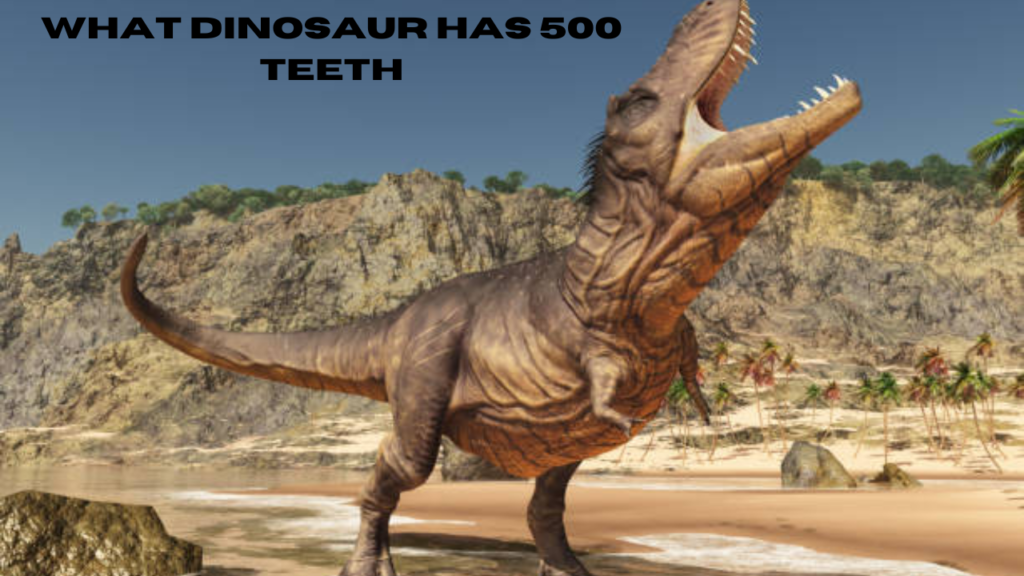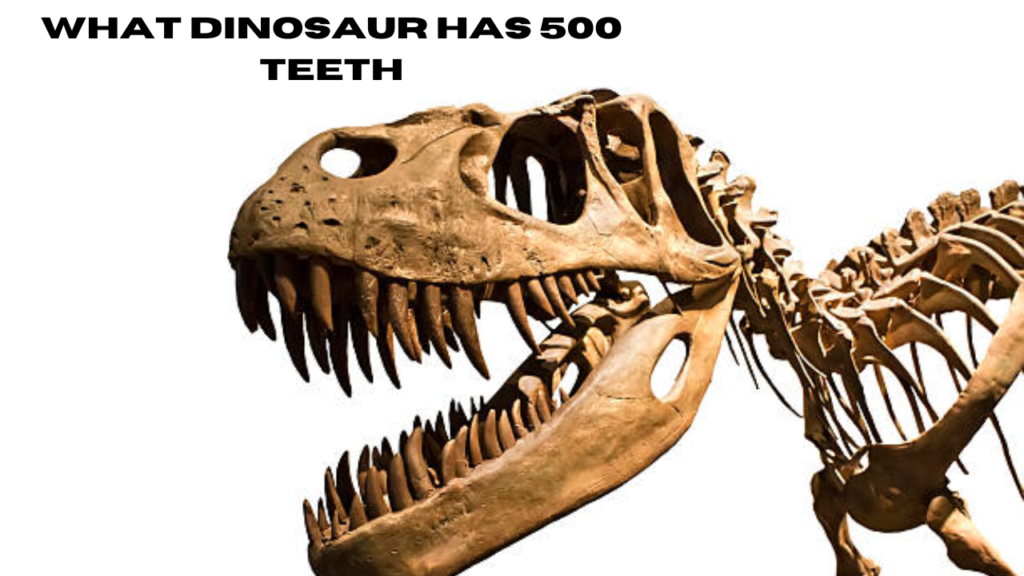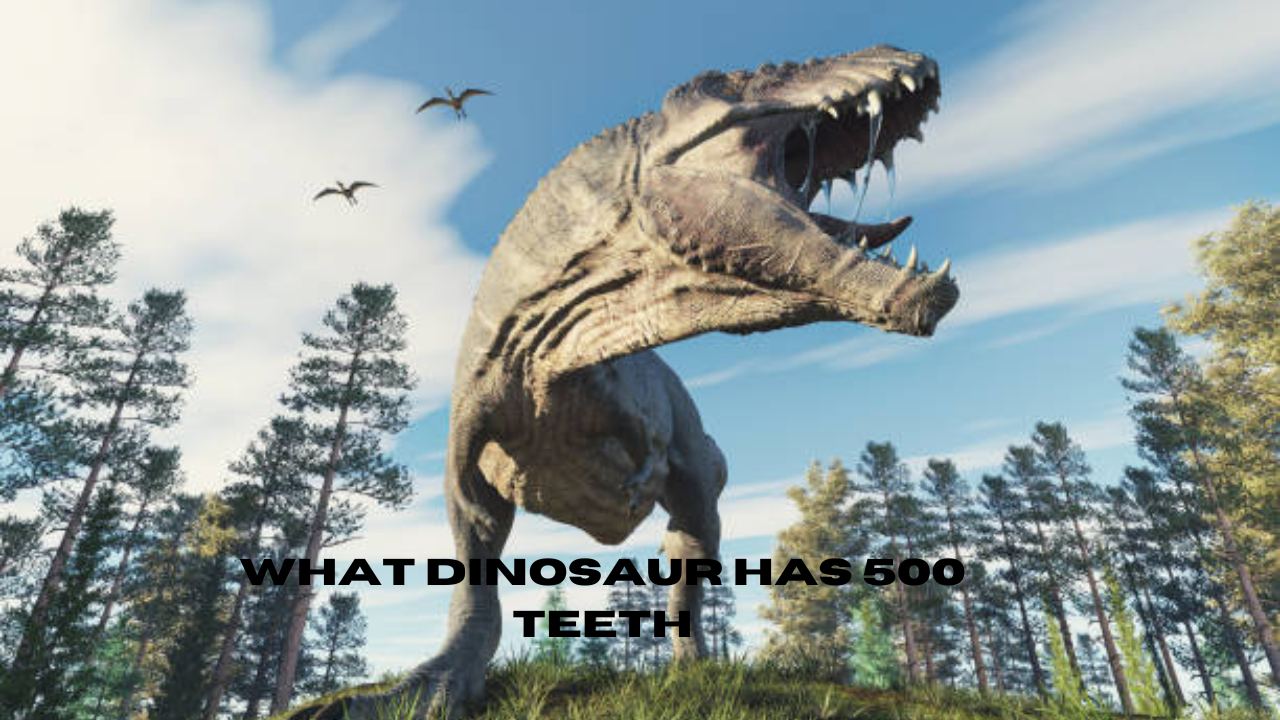If you’ve ever wondered what dinosaur has 500 teeth, the answer is the Nigersaurus. This remarkable dinosaur, often called the “Mesozoic cow,” stands out for its massive number of teeth and fascinating adaptations that made it a unique herbivore of the Late Cretaceous period. Let’s dive deep into what makes the Nigersaurus an extraordinary species in paleontology.
The Discovery of Nigersaurus
The Nigersaurus was first discovered in the Sahara Desert in Niger, Africa, during the 1960s. However, it wasn’t until the late 1990s and early 2000s that this dinosaur gained widespread attention, thanks to paleontologist Paul Sereno and his team. Through careful excavation and reconstruction, scientists uncovered the intricate details of this dinosaur’s anatomy and lifestyle.

Physical Characteristics
The Nigersaurus was a medium-sized sauropod, measuring about 30 feet long and weighing approximately four tons. Unlike its towering relatives like the Brachiosaurus, the Nigersaurus had a relatively short neck. Despite this, its anatomy was ideally suited for grazing near the ground.
A Jaw Full of Teeth
The most striking feature of the Nigersaurus is its jaw, which houses more than 500 teeth. These teeth were arranged in a unique dental battery, featuring rows of replacement teeth continuously growing throughout the dinosaur’s life. This adaptation ensured that the Nigersaurus always had sharp teeth ready for efficient feeding.
Diet and Feeding Habits
So, what dinosaur has 500 teeth, and what did it eat? The Nigersaurus’s teeth and jaw structure reveal much about its diet. It primarily fed on low-lying vegetation, such as ferns, horsetails, and other soft plants. Its broad, flat muzzle allowed it to graze efficiently like a cow. This specialization earned it the nickname “Mesozoic cow.”
Grazing Mechanism
The Nigersaurus’s jaw was highly flexible, enabling it to move sweepingly while grazing. Its teeth were numerous and uniquely shaped to strip vegetation from the ground. These features made it one of the most efficient herbivores of its time.
Unique Skull Design
The Nigersaurus had a lightweight skull with thin bones, which was unusual for a sauropod. This design allowed it to support its massive dental battery without adding excessive weight. Interestingly, the skull’s structure was so delicate that scientists could see through parts of it when held up to light.
Habitat and Environment
The Nigersaurus lived around 110 million years ago during the Late Cretaceous period. At that time, the Sahara region was a lush, riverine environment with diverse plant life. This fertile habitat provided ample food for the Nigersaurus and other herbivores of the era.
Importance in Paleontology
The discovery of the Nigersaurus has provided invaluable insights into the diversity of sauropods and their ecological roles. Its unique adaptations challenge traditional notions about dinosaur feeding strategies and evolution. By understanding the Nigersaurus, scientists can better comprehend the complex ecosystems of the Mesozoic era.
Fun Facts About the Nigersaurus
- The Nigersaurus replaced its teeth approximately every 14 days, ensuring it always had a fresh set for grazing.
- Its name, Nigersaurus taqueti, honors the country of Niger and French paleontologist Philippe Taquet.
- Despite its impressive dental arsenal, the Nigersaurus had a gentle disposition, much like modern herbivores.
Also read: The Greatest Estate Developer: A Masterpiece of Creativity and Ingenuity

Climax
The Nigersaurus is a fascinating example of evolutionary ingenuity. Its 500 teeth and specialized grazing adaptations highlight the incredible diversity of dinosaur species. Next time someone asks what dinosaur has 500 teeth, you’ll know the answer and understand the remarkable story behind this unique creature. Its discovery inspires curiosity and wonder, reminding us of the rich history beneath our fe

















































